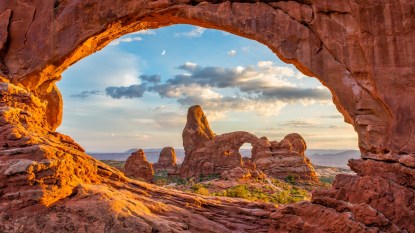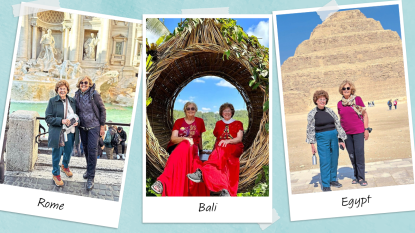2023 Dream Vacation Guide — These 8 International Destinations Will Wow You This Summer
Explore what's out there.
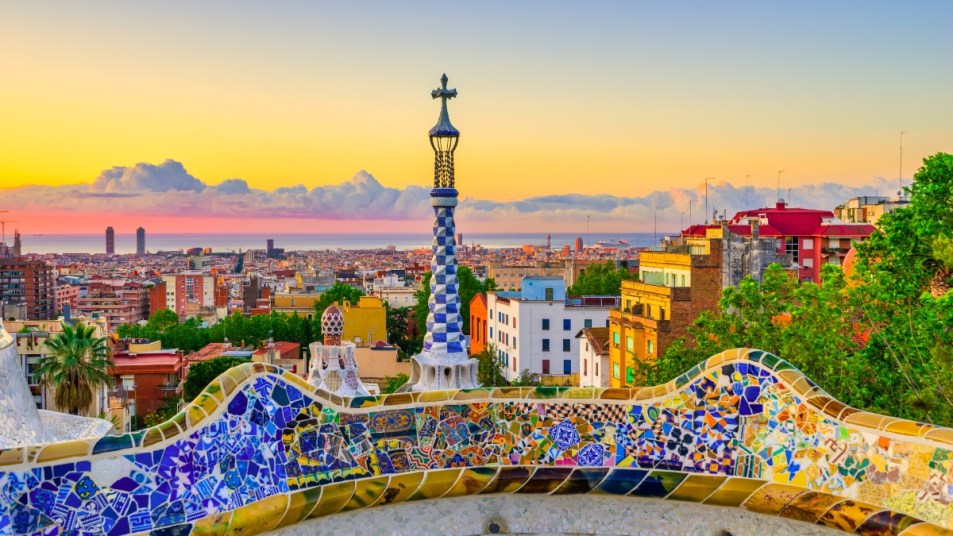
Participating in cultural activities — think museums in Paris, theater in London, and walking tours in Rome — is what makes vacation memories. To truly connect with the place you’re in and the people who live there, mix up your must-see list with outings that allow you to mingle. There’s no better way to get a feel for the culture that surrounds you than by engaging all of your senses and interacting with residents who know it best. Below are sights you can’t miss when visiting eight of the world’s top vacation destinations.
1. Cape Town (South Africa)
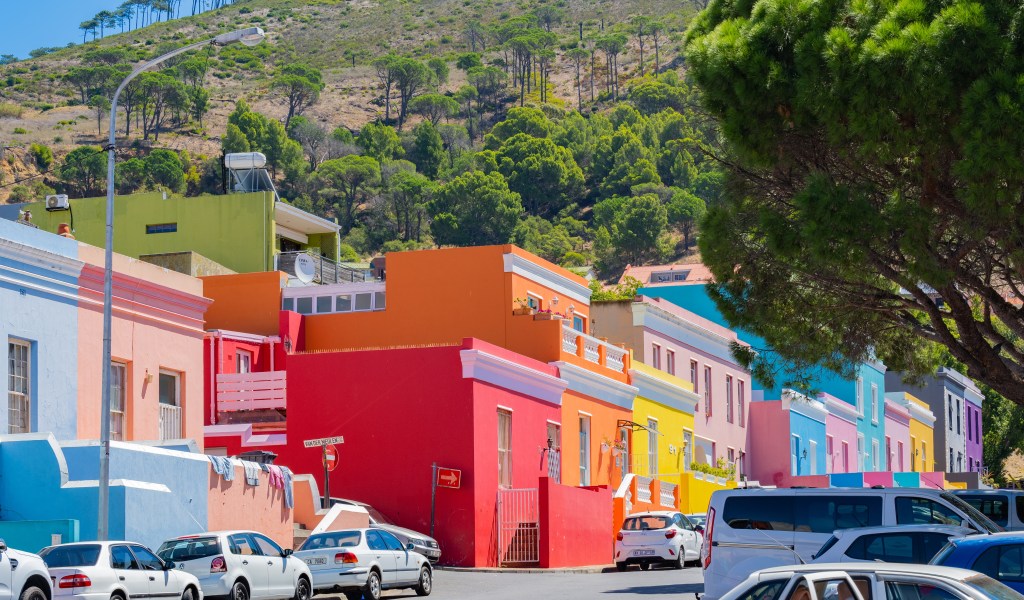
Set on the southwestern tip of Africa just north of the Cape of Good Hope, Cape Town is a mix of modern style and colonial sprawl, backed by some gorgeous natural scenery. South Africa’s Mother City was the site of the country’s first European settlement in 1652, and centuries of past Dutch and British rule have created a striking confluence of cultures. From the always-buzzing Central Business District to the polished Victoria & Alfred Waterfront and the colorful Bo-Kaap neighborhood, Cape Town is a haven for creatives who find inspiration in the city’s diversity and beauty. Nestled between the Atlantic Ocean and Table Mountain, Cape Town checks every box a traveler would expect from a marquee city. The Zeitz Museum of Contemporary Art Africa houses the world’s largest collection of its kind.
Visiting Tips
Summer (December to February) is peak season, but temperatures are favorable year-round. Rent a car to explore the Cape Peninsula, including Boulders Beach, Cape Point, and Constantia. Tour the city with with Context Travel. Stay at the Belmond Mount Nelson, where dinner at The Test Kitchen is a 10-minute drive away.
2. Kyoto (Japan)
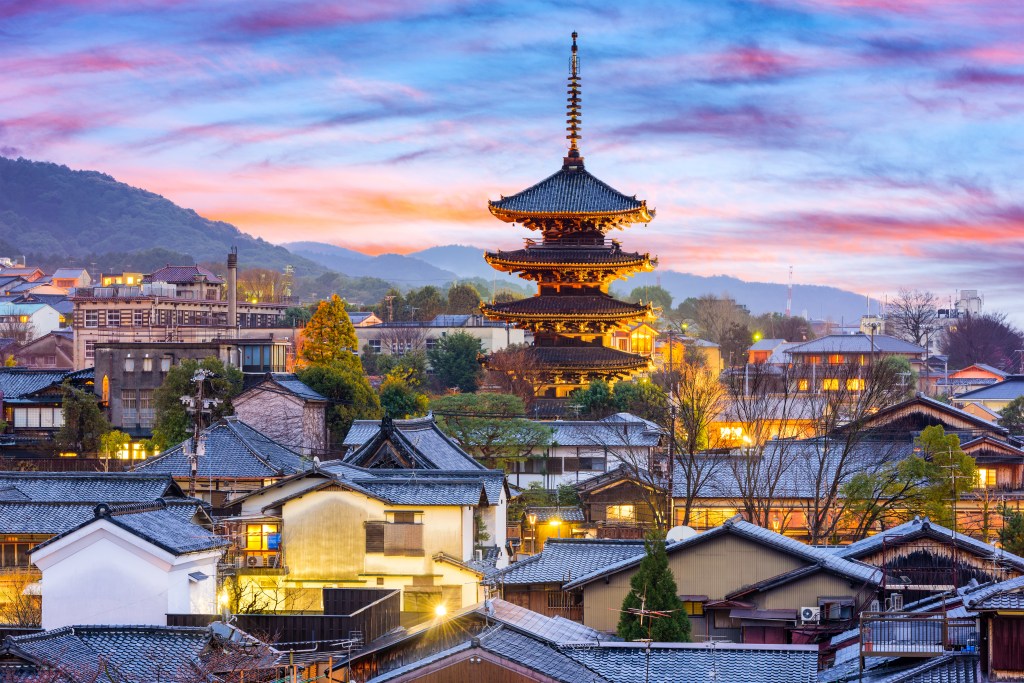
For an ultimate wellness-centered trip to recharge, rejuvenate, and reset, the culturally rich city of Kyoto tops bucket lists. Travelers begin to unwind by taking in the sights: historical palaces, traditional streets, and stunning natural beauty. Then, the spiritual journey begins with a visit to several of the city’s 2,000 Buddhist temples and Shinto shrines.
A hike through Fushimi Inari Shrine — famous for its thousands of bright vermilion torii gates — is a must; the property’s trails, which take about two hours to complete, lead into the forest of the sacred Mount Inari. For something even more immersive, the 16th-century Shunkoin Temple hosts one or three-day retreats teaching Zen meditation. The historic temple also offers a course in the art of the Japanese tea ceremony, which has roots in Zen Buddhism. Alternately, Bishamon-do Shorinji Temple — the oldest Buddhist temple in Kyoto, established in 1236 — holds Zazen meditation and yoga sessions. Serenity reigns in traditional Japanese gardens, created hundreds of years ago by Zen monks, artists, and nobles and considered sacred. Ryōan-ji Temple is home to the country’s most famous rock garden, while Daikaku-ji Temple — a former imperial palace built over 1,200 years ago — harbors the stunning Osawa pond garden.
Spending the day soaking in hot waters while absorbing the tranquil scenery at an onsen (outdoor natural bath) is a popular traditional ritual in Japan. Express trains bring serenity-seekers to picturesque hot-spring towns that dot the Higashiyama Mountains surrounding Kyoto.
Visiting Tips
Be respectful and learn the do’s and don’ts of visiting a temple or shrine, such as bowing slightly before entering, walking to the sides of the path, and so on. Stay at FUFU Kyoto, boasting a natural hot-spring cypress bath in each of its 40 rooms; hotel activities range from tea-tasting and incense-smelling ceremonies, to private yoga and guided meditation.
3. London (England, UK)
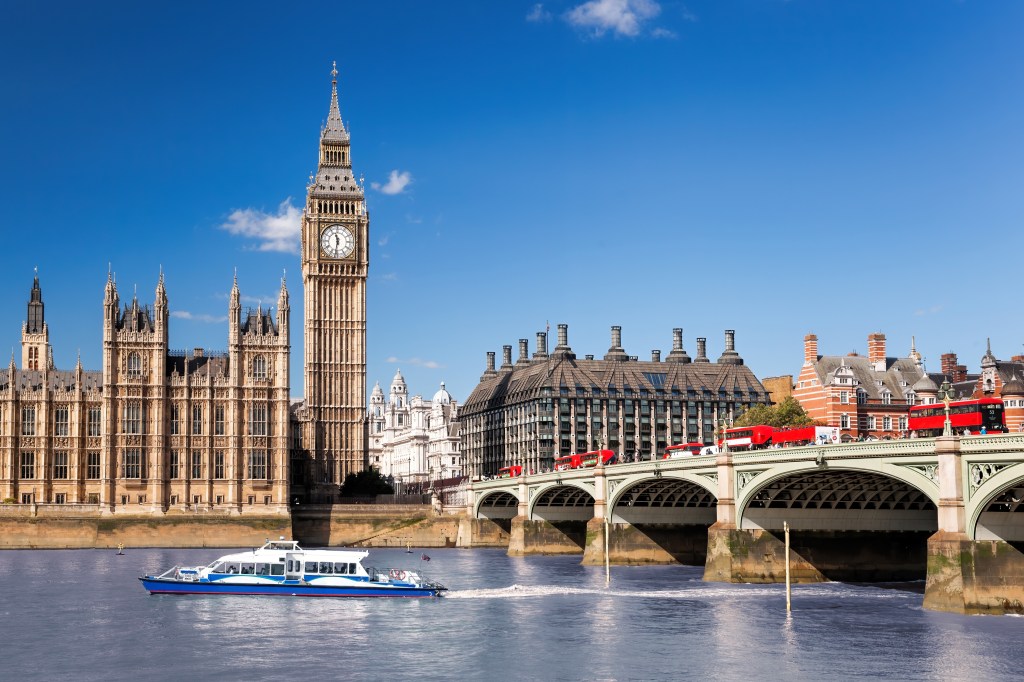
Theater, art, music, literature, cinema, architecture — it’s all in London, a city that packs some 90 music venues, 190 museums, 250 theaters, and 850 art galleries into its 607 square miles. Arguably the city’s most famous theater, The Globe opened in 1599 and was painstakingly replicated in 1997. Patrons are in for an immersive experience, as legendary Shakespeare works like A Midsummer Night’s Dream, Romeo and Juliet, and Twelfth Night are presented in the same fashion as in the Bard’s original playhouse.
Across the river, the West End endures as the heart of London’s theater scene. Here, Theatre Royal Drury Lane — set in a circa-1660 auditorium — is the city’s oldest theater still in use. Popular performances here range from Charlie and the Chocolate Factory to Frozen. Meanwhile, the liveliest street in London’s West End is Shaftesbury Avenue, where Les Misérables has been running in the Queen’s Theatre since 1985.
From Theatreland, patrons can walk or catch an iconic double-decker bus to celebrated institutions like the British Museum, exhibiting the Rosetta Stone; the National Gallery, housing more than 2,300 works; Tate Britain, with its premier collection of modern art; and the British Library, which displays a copy of the Magna Carta.
Visiting Tips
The TKTS booth in Leicester Square sells discounted day-of tickets for Official London Theatre productions. The British Museum, National Gallery, and Tate Britain are free, but may require pre-booked timed tickets. Purchase a London Pass for access to more than 90 popular attractions, including Westminster Abbey. If you’re in the mood to catch a movie, head to Picturehouse Central cinema in Piccadilly Circus, London’s answer to Times Square.
4. Paris (France)
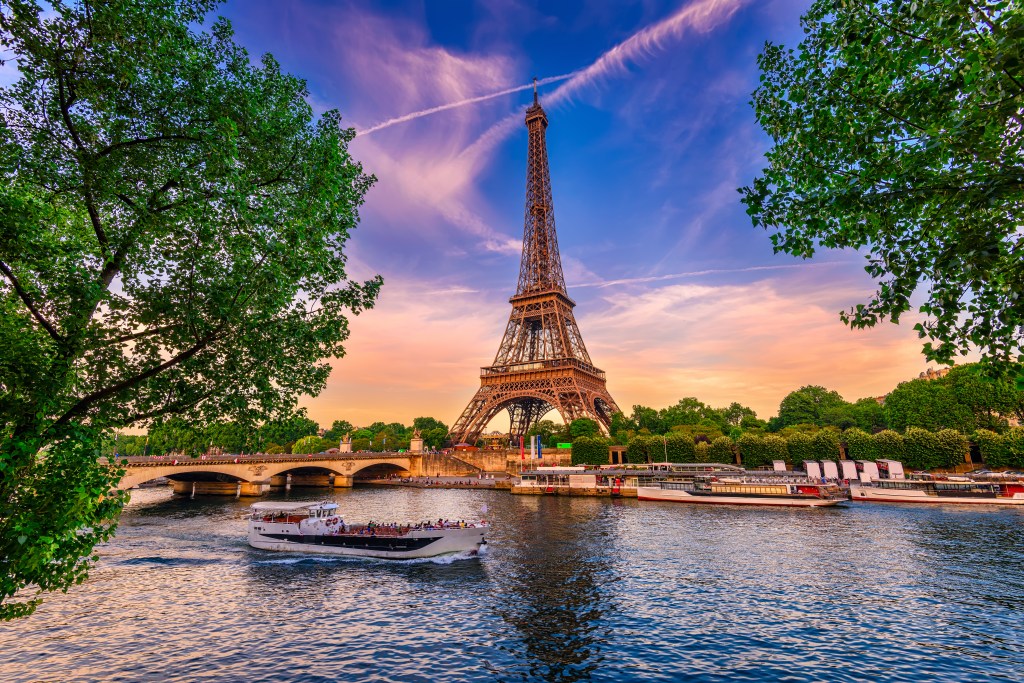
The birthplace of the impressionism movement and home to the largest art museum in the world, Paris tops every list of the best cities for art lovers. Aesthetes begin at the Louvre, spanning 782,910 square feet. Once a palace dating to the 12th century, now it safeguards some 38,000 works, including gems like the “Mona Lisa,” “Venus de Milo,” and the “Winged Victory of Samothrace.”
Just next door, the 500-year-old Tuileries Garden offers respite to weary museum-goers and features its own impressive collection of statues, most famously, “The Kiss,” by Auguste Rodin. Just across the Seine River and housed in a turn-of-the-century train station, the Musée d’Orsay centers on impressionist works by renowned French artists such as Cezanne, Degas, Monet, and Van Gogh.
All along the riverfront, Paris’ monuments stand as architectural masterpieces unto themselves: The glittering Eiffel Tower, the city’s showcase and symbol. The Grand Palais, with its massive glass roof. Notre-Dame, one of the finest examples of French Gothic architecture ever constructed.
The city’s uniform look is itself a product of elegant urban design. Commissioned by Napoléon III and masterminded by Georges-Eugène Haussmann, the 19th-century renovation introduced the modern Paris of today. The best way to soak in the wide, tree-lined boulevards and pretty parks is from a corner café. Here, sipping café crème and watching the world go by, visitors and locals can not only discuss the city’s culture scene, but be a living part of it.
Visiting Tips
Purchase a Paris Pass for entry to a choice of 80-plus attractions, such as the Louvre and the
Arc de Triomphe. Fans of live entertainment should catch a cabaret show at the Moulin Rouge, an icon of the eclectic Montmartre neighborhood since 1889.
5. Istanbul (Turkey)
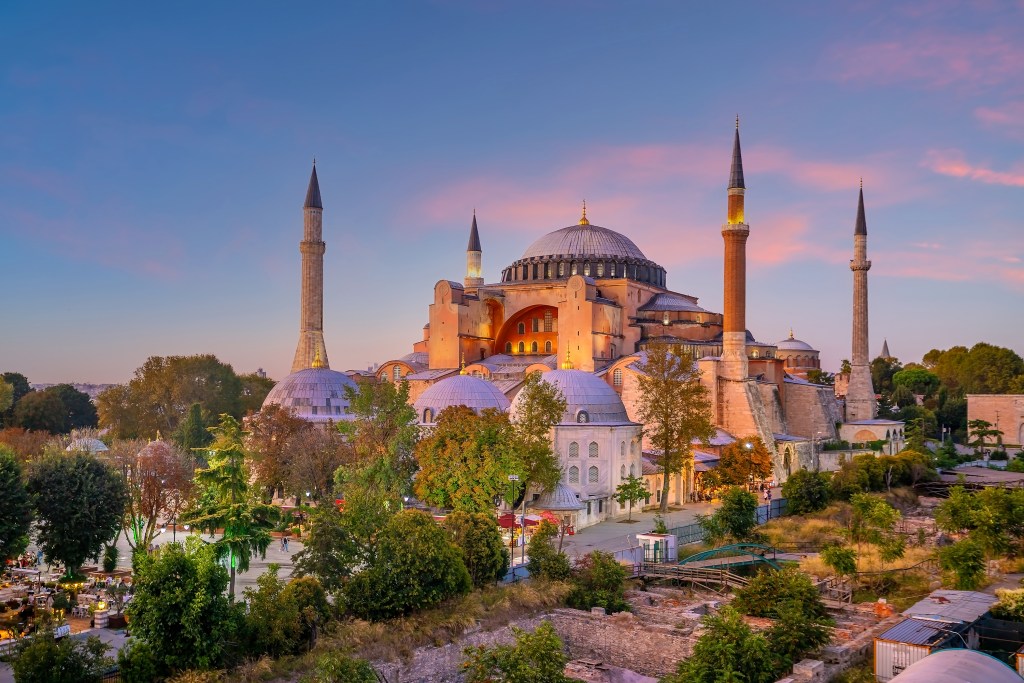
Treasures abound in Istanbul, where travelers can experience some of the ancient rituals and traditions left by the Greeks, Romans, and Ottoman sultans. A traditional Turkish bath does more than cleanse the body. The intricate procedure, which includes a vigorous exfoliation and a soapy rubdown on a heated marble slab, is also known to boost immunity and induce a sense of well-being. Visitors to Ayasofya and Süleymaniye hammams will discover not only bubbly bliss, but architectural marvels designed in the 16th century by Mimar Sinan. This Ottoman architect was also the genius behind the Blue Mosque and Süleymaniye Mosque, both of which are known for their ornate interiors. Like most mosques in Istanbul, both welcome visitors into their calming spaces during non-worship times.
Though Turkey’s famous Whirling Dervishes don’t practice within a mosque, their ancient, endorphin-releasing dance is a religious ritual that begins their spiritual ascent toward enlightenment. The Hodjapasha Cultural Center offers insight into the Dervish order and, in the summer, it hosts public performances every evening at 7.
Visitors in search of an endorphin fix can jog to the top of Çamlıca Hill, where they’ll be rewarded with gorgeous views of the European side of Istanbul. Another option is a trip to Büyükada Island, where miles of hilly, car-free roads are perfect for runners and walkers looking to explore the island’s cafés, shops, and elegant mansions.
Visiting Tips
Re-create some of Turkey’s most famous dishes at Cooking Alaturka; the company also offers food tours to local cafés, markets, and bazaars. Completed in 537 A.D., the Hagia Sophia has been an Eastern Orthodox church, a Roman Catholic cathedral, a Muslim mosque, and a national museum. In 2020, it once again became a mosque, but visitors are still welcome (within all mosques, arms and legs must be covered, and women must cover their heads).
6. Rome (Italy)
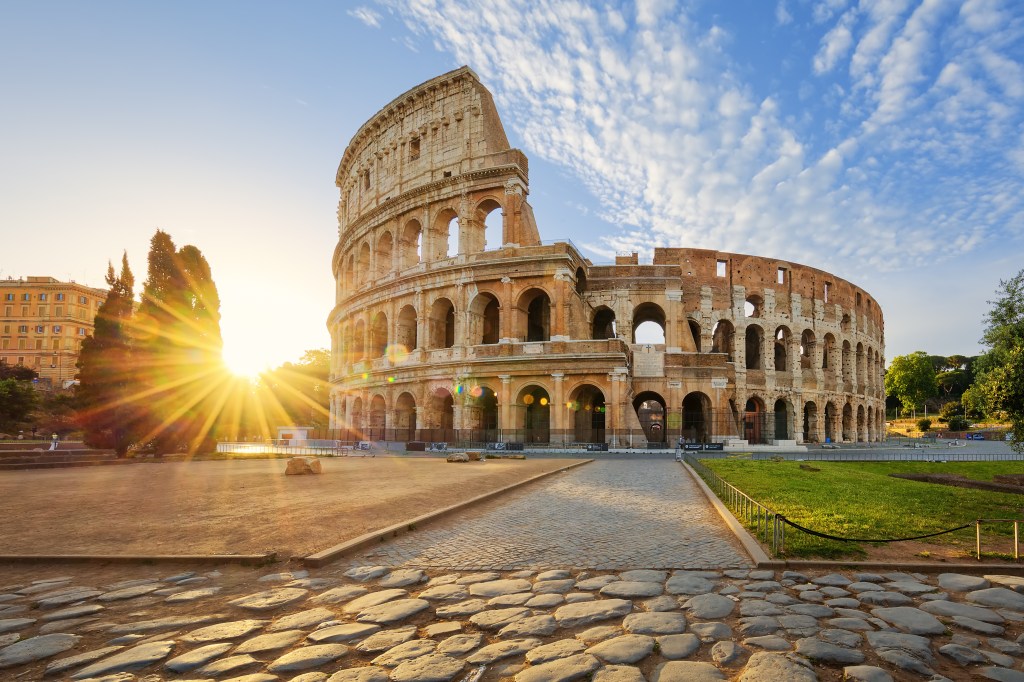
As Rome comes into focus, visitors realize this ancient city doesn’t exist just on one plane, but in many layers, 28 centuries deep. Monuments are literally built on monuments. Here, every building request requires an archaeology evaluation, slowing development and fostering a timeless ethos that prizes food, faith, the arts, and historic architecture. Connoisseurs of Renaissance art find examples galore in Vatican City: Raphael’s “Transfiguration,” Leonardo da Vinci’s “St. Jerome in the Wilderness,” and of course, Michelangelo’s magnum opus, the Sistine Chapel. The works of celebrated Baroque artist Gian Lorenzo Bernini also pepper Rome, including the Fountain of the Four Rivers and multiple sculptures at the Borghese Gallery.
Patrons interested in classical art should visit the Palazzo Massimo, which displays excavated frescoes, mosaics, and statues from the days of the Roman Empire. Of even greater antiquity is the sixth-century B.C. Etruscan Sarcophagus of the Spouses, on display at the National Etruscan Museum of Villa Giulia.
But Rome’s greatest masterpieces are its legendary landmarks: the Spanish Steps, Trevi Fountain, the Roman Forum, the Pantheon, and the circa-72 A.D. Colosseum, where thousands of gladiators and wild animals met their ends. Each marvel reflects a different moment in time, and together they form an Eternal City of enduring appeal.
Visiting Tips
Boasting three Michelin stars and set in the Rome Cavalieri, A Waldorf Astoria Hotel, La Pergola serves exquisite Mediterranean cuisine, from black-truffle tortellini to hollow spheres of pomegranate sorbet. The hotel itself is a treasure trove of artwork, featuring more than a thousand pieces from around the world. The Colosseum, Borghese Gallery, and Palazzo Massimo are included in the Roma Pass, which also comes with free use of public transportation (choose up to two attractions). For most sights, arrive early or purchase tickets online in advance to avoid long lines.
7. Barcelona (Spain)
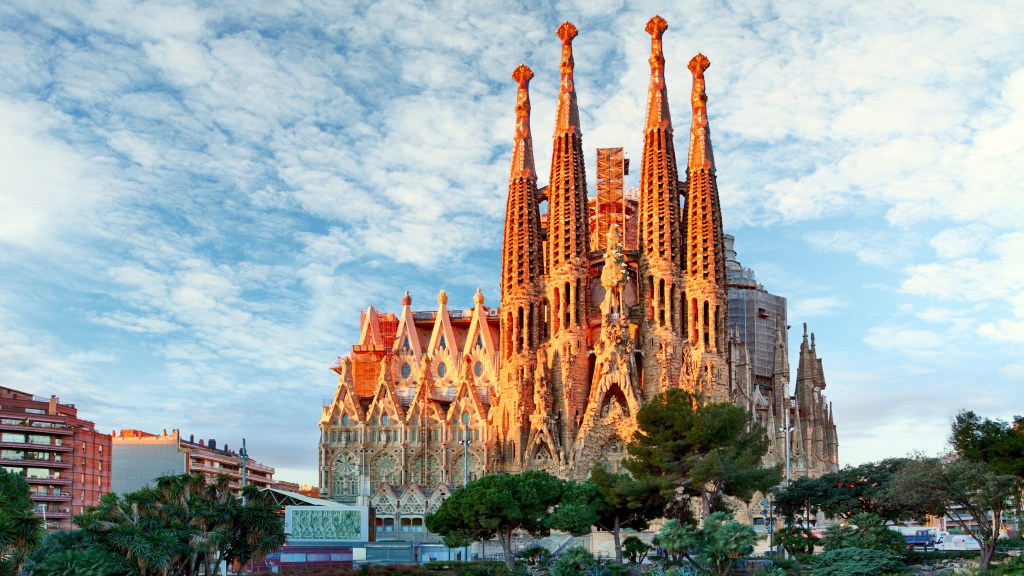
Bursting with avant-garde art and famous architecture, Barcelona is the colorful seaside city where Gaudí’s imagination runs wild. Barcelona’s must-sees, including the iconic Sagrada Familia basilica and the historic labyrinth of the Gothic Quarter, are well known for a reason. They make for ideal sights to first get acquainted with the city. Beyond the city center, visitors walk up elegant Passeig de Gràcia, stopping to tour Gaudí’s fanciful Casa Batlló and La Pedrera. From here, majestic Mount Tibidabo houses both a grand temple and a retro amusement park primed for thrill-seekers. Farther uptown (and up some steep hills, for those who enjoy a brief hike) is Gaudí’s dreamy Park Güell, where every inch is a photo op (most notably, the mosaic lizard). On the way, the charmingly bohemian Gràcia neighborhood brims with lively plazas and narrow winding streets of shops and cafés.
Adventurers will enjoy the cable cars that climb Montjuïc hill to its summit of Montjuïc Castle, with unforgettable views of the city. Wanderers wend their way back down past the stadium for the 1992 Olympic Games. Of course, no trip to Spain would be complete without paella. While Barcelona isn’t the city that invented the savory rice dish (credit goes to Valencia), it serves some delicious variations — gourmands dig in during a lunch in the lively beachfront Barceloneta area.
Visiting Tips
Lunch in Barcelona is often a large, leisurely meal that can stretch into late afternoon. Many excellent restaurants offer a weekday menú del día: a set, multicourse menu at a great price (most charge a small additional cost to sit at an outdoor table). Devour Tours offers intimate guided food tours, led by local experts who know where to find the best tortilla and jamón ibérico. Small shops tend to close by 2 p.m. or 5 p.m., as well as all day Sunday. A friendly greeting of “bon día” (“good day” in Catalan) is a great way to earn favor with locals.
8. New York (New York)
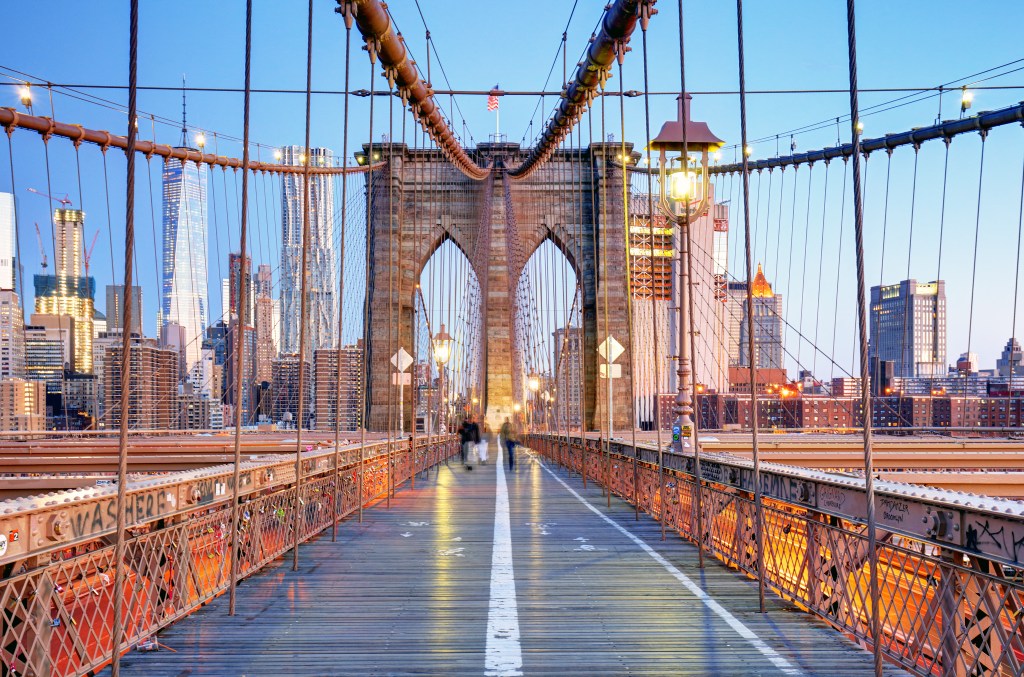
Whether it’s the first or 15th visit to the Big Apple, the ever-changing city always manages to surprise. Just when you think you’ve seen it all, in comes Little Island, a 2.4-acre human-made floating park on the West Side of Manhattan. This new public space over the Hudson River provides a haven of smartly landscaped greenery via a series of concrete pedestals that range in elevation. Visitors wander through the paved paths to the highest point for superior skyline views (the park is free, but peak times may require advance reservations online). Within arm’s reach is the 1.45-mile High Line, New York’s original elevated park. Picnickers can grab a snack at nearby Chelsea Market’s massive global food hall.
Heading slightly uptown, The Edge at Hudson Yards — a 100-story outdoor sky deck also on the West Side — is now the highest sky deck in the Western Hemisphere. Suspended midair with 360-degree views and a see-through floor, it offers the most unique observation point (just before sunset is the prime time to go; tickets must be booked in advance).
And while Manhattan is spectacular, Brooklyn is increasingly one of the city’s epicenters of the new and noteworthy. To reach scenic Brooklyn Bridge Park, water taxis depart from stops along the East River, while pedestrians cross the Brooklyn Bridge (the backdrop of Manhattan is a perfect photo op). The 85 acres that stretch across the DUMBO and Brooklyn Heights waterfronts warrant an entire day; favorites include the century-old Jane’s Carousel and food options from lobster rolls to ice cream.
Visiting Tips
New York is best experienced on foot. Pack comfy shoes and wander from neighborhood to neighborhood as the locals do. Although widely known for its many restaurants and museums, the city also shows off its expansive outdoors, so spend some time exploring its many parks (Central Park rightly gets the most recognition, but Bryant Park, Madison Square Park, Battery Park, and Brooklyn’s Prospect Park are also lovely).
A version of this article appeared in our partner magazine, The World’s Most Amazing Places.











